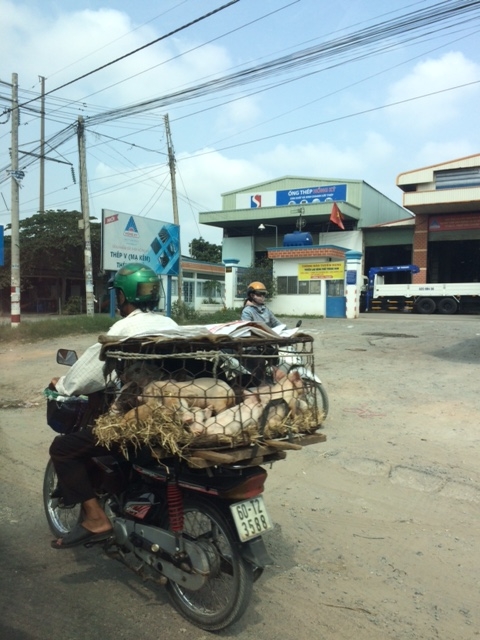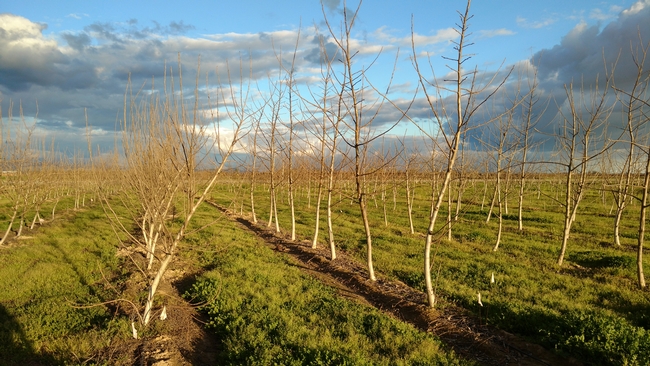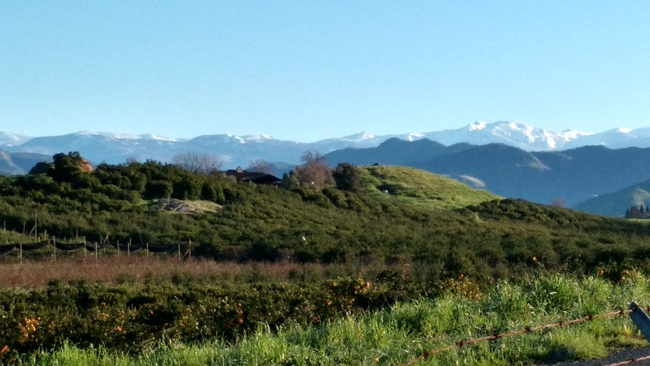- Author: Wendy Powers
Yesterday we spent the morning with faculty from Vietnam National Agriculture University (VNUA) talking about the study abroad program we (Liz Karcher, Purdue University, and I) partnered with them to conduct over the last 5 years. It's hard to believe it has been that long. During that time we've seen the opportunities to improve the student experience and engagement with the Extension professionals that participate in any given year. We've also had time to think about how better to engage our partner and host university. Our conversation this time highlighted an increased emphasis on adaptation to changing and variable climate and climate change mitigation work by VNUA researchers and leaders. We learned about the rice research program and interest in developing drought tolerant varieties as well as short season varieties. The work is in partnership with the International Rice Research Institute (IRRI) so I suspect Mark Bell, UC ANR's soon-to-be first Vice Provost - Statewide Programs/Strategic Initiatives (see ANR Update for more information), is familiar with the work. We also learned about the existing MOU's that VNUA has with UC Davis and UC Riverside. And VNUA faculty talked briefly about their research to develop a seedless mandarin so I suspect a few of the UC Riverside Specialists have connections at VNUA.
Of particular interest to me was hearing about the snowfalls in winter 2013 and January 2016. The January 2016 snow appears to have been rather destructive, based on photos we saw of damage to artichoke fields and cattle, alike. Winter feed rations are a new concept in Vietnam but something being taken seriously now. A great conversation and brainstorming session led to another big lunch, perhaps too big given the heat and humidity and with a far fancier display than is customary for me. I will say however, that despite reports from the locals that bitter cucumber is good for your kidneys or liver (2 different reports from different individuals so a bit unclear which organ, if any, really benefits) I am going to risk it and stay away – perhaps a few bites provides a lifetime of health.
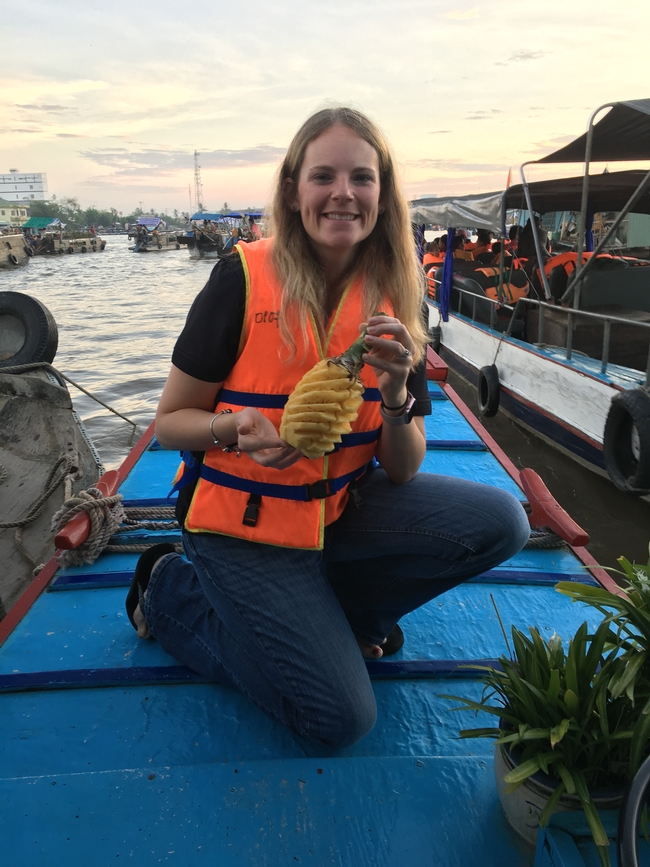
In the afternoon we toured a milk processing plant, about an hour and a half from Hanoi. I couldn't begin to guess how far we drove. If you haven't driven in Asia, it's an experience and you never know what you might see along the way or what type of slow down might be ahead of you. Of course as I write this I realize I have said the same thing about the Amtrak/BART commute between Oakland and Davis. The processing plant produces pasteurized milk, UHT milk and a goat milk yogurt. Yogurt consumption has increased dramatically and in response to increased protein demand. Following a quick tour and overview, we stopped at a modern dairy farm that supplies milk to the plant (40 cows ranging in 5 to 15 lb milk/hd/d). The diversified farm also had beef cattle, tea and greenhouse vegetable production.
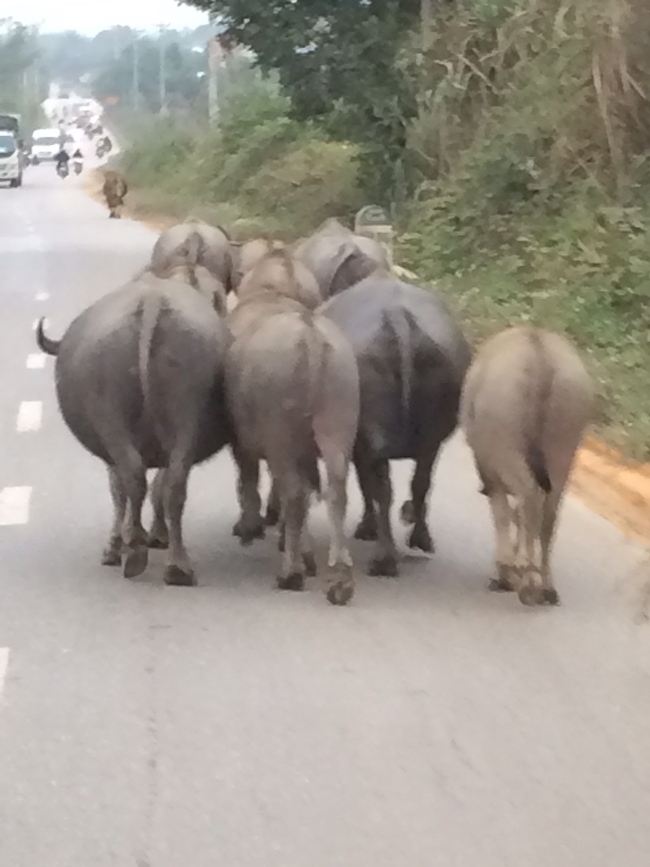
Since that afternoon, we've headed to Can Tho for the last leg before heading back to reality. After spending time in Vietnam's 2 largest cities it will be nice to see traffic congestion ease up a bit.
I'm looking forward to visiting with campuses and Specialists when I return to see what level of interest there is in being part of this course that engages both students and Extension professionals. I'll be sure to bring the topic up when I meet with the UCR Specialists next Friday.
Thanks to Andrea Brown (Purdue University Extension) for sharing her photos on this trip!
- Author: Wendy Powers
I am in Vietnam this week talking with 3 different universities about establishing a study abroad course around the topic of global food security and climate change. The intent of the course is to engage undergraduate students and Extension professionals in conversations around the topic in a broad sense that spans the breadth of Extension program areas. The conversation would take place pre-and post-trip to Vietnam.
I sat with faculty from Nong Lam University near Ho Chi Minh and our discussion shifted to some of the current challenges in the region. As they talked about the severe drought in the highlands region where coffee is a major commodity and the impact that the drought has downstream with increased salinity in the Mekong Delta region, I recalled a very similar conversation with Bob Hutmacher and the West Side REC superintendent, Merf. Students who enroll in the course will work on projects to develop creative solutions to the challenges they observe. Those same projects may provide options to our own challenges in California. Engagement with Extension professionals will be useful to students as a reality check for their ideas.
If you haven't been to Vietnam, it's a fascinating country. With 93 million people, rising sea level, and national goals of decreased reliance on food imports Vietnam makes for a great case study for the course. I've had the opportunity to visit multiple times and never tire of it. This evening we left Ho Chi Minh and arrived in Hanoi. Tomorrow we visit with friends at Hanoi Agricultural University (now Vietnam National University of Agriculture); our hosts for the course when I co-instructed it through Michigan State University. It will be interesting to see where the conversation goes tomorrow given that we are now in the Red River Delta region and perspectives may be different.
- Author: Wendy Powers
I've been living out of a suitcase for what seems like a month, but I don't dare actually confirm that. For some unexplainable reason March, July and October have always been months filled with travel throughout my career, regardless of where I was or what position I have had. Anyone else see the same thing? At least this year it has been more interesting than on average.
I had a chance to visit Kearney REC and Lindcove REC back at the end of February. I can't thank Jeff Dahlberg and Beth Grafton-Cardwell enough for the time they spent with me. I had no idea Kearney was like its own campus. In spite of knowing it was the ‘largest' REC that campus look and feel caught me off guard. Andre Westphal drove around to see some of his plots. I've already said all I know about nematology but clearly he is working with colleagues from around UC and beyond that have expertise in a whole host of disciplines. It was fascinating to see his work where trees have been cloned from one another. In the photo, below, the row of trees on the far left are all from the same parent stock (clones) and those in the row immediately to the right are also clones but from different parents. See how all of the trees in the left row are bent and consistently to the same extent, while those in the right are consistently more upright? Who would have thought? It certainly makes a case for nature over nurture; not a concept I had thought much about as far as its applicability to the ‘uprightness' of trees.
Andre and I discussed at length the topic of cost to doing research (indirect costs, user fees) and the value of partnerships with the commodity groups across California. He was in the middle of trying to get a proposal submitted so I didn't want to take too much of his time but appreciated the conversation. I have the same concerns and certainly had them over my career as I have watched the cost of research (tuition and assistantship rates, as well as IDC and user fees) skyrocket to the extent I sometimes hoped I didn't get the grant because managing the resources, while still producing defensible science, would be such a struggle. The stress was certainly much greater when I was more junior in my career, even though costs were much lower. So clearly a constant worry I suspect throughout all of our careers. No doubt Andre and I will have more conversations about this; perhaps when I meet with UCR at the end of the month.
Lindcove REC also caught me off guard. After spending 8 years in Florida I certainly wasn't expecting any ‘new' when it came to seeing a citrus orchard but then, there it was – a citrus grove with snow-covered mountains in the backdrop. Absolutely beautiful and just one more example in the list of surprises California has to offer. The facility is a tremendous resource from the meeting space to the lab to the amazing pack house. I could definitely spend some time playing with that software and instrumentation. And to see the regular investment by the industry into the facilities underscores the strength of the partnership UC has with the industry.
Much has happened since those visits but too much to write about here. Back in airports (another unexpected overnight) but hope to get back to sharing more ANR adventures soon.
- Author: Wendy Powers
A few posts ago I mentioned that I had been thinking about the relationship between strategic initiatives, statewide programs, program teams and work groups. The reason for thinking about this stems from all sorts of comments and questions I have heard about the topic since arriving at UC ANR. Here's where I am at in my thoughts on the subject; I'd love to hear what others think.
Strategic Initiatives (SI) are issue based with clear desired outcomes identified by each SI. It's possible that there is overlap in some of the desired outcomes between different SI. The issue tackled by each SI is relevant to a broad audience of group of stakeholders. I see these functioning at a high altitude, say 30,000 feet, for example.
Statewide Programs and Institutes (SP-I) are issue based (e.g. water, integrated pest management or nutrition policy) or targeted at a more specific audience but tackling multiple issues (e.g. Master Gardeners, youth development or 4-H). The SP-I strive to affect change that contributes to outcomes that may reside within one or more SI. It is unlikely that a single SP-I has all outcomes within a single SI. These function at the 20,000 foot level.
Program Teams (PT) are much like SP-I in that they work on a narrower set of issues or serve a narrower set of clients than that addressed or served by SI. The scale of effort is likely different between PT and SP-I. Again these might function at the 20,000 foot level. Presumably there is not redundancy between SP-I and PT or if there is, I would have to wonder why that is the case and what value PT and SP-I see in having both present.
Work groups (WG) are small and even more specific in their effort and audience served. I see these as working at the level of a specific activity or event and likely fluid in membership as events and activities arise and sunset. Having a means to communicate and work together is absolutely necessary to accomplish events and activities and certainly such activities contribute to behavioral changes that affect outcomes. But I have to think that outcomes may best be assessed and reported at the PT or SP-I level. A WG is a subset of PT or SP-I and any given WG may work together routinely as a result of a common audience.
So that's what I have come to understand. I welcome other thoughts on the topic particularly because I am trying to determine how best to gather aggregated outcome data and behavioral change data. It seems to me that the PT or SP-I is the place to do this because, again, I would see the WG as being a fluid group of people that form around a specific activity or event. The sum of events, activities, educational opportunities is what affects change more so than any one of those actions on its own. This isn't to say that individual actions and reports aren't important but rather to recognize that the sum of the parts is greater than an individual piece and as we seek to bring benefit to everyone across the state, there's value in lumping rather than splitting our impacts and outcomes.
I do want to thank Delta Airlines for providing me with an extended period of time to put these thoughts to paper. While I remain optimistic I will see Sacramento tonight, I think I had better go stake out some floor space, just in case.
- Author: Wendy Powers
Recently I had the chance to visit West Side REC, sort of in the middle of nowhere. It was fantastic – a beautiful drive over that morning from Selma, CA with fabulous views on mountains to both the east and the west. I'm not sure what ranges they are, but at some point I will look at a map and figure it out. What a great group at the REC. It was quite an education for me to learn so much from Bob Hutmacher and Merf Solorio. Bob described the area to me as “where all the issues of the west come together”. While I had previously heard about Delta smelt, the Delta aqueduct, dependency on snow pack, and challenges with salinity build up, being at West Side and seeing the water allocation graphs over the past 40 years really put the cumulative challenge in perspective for me. I better understand why growers are putting in higher value crops despite their sensitivity to salinity levels that are almost inevitable given the circumstances. It was equally interesting to learn that the area water district represented the largest pressurized water district in the U.S. I do still have some side reading to do to better understand terms like asbestos veins and marine soils; terminology that is not used often in the Midwest or eastern part of the U.S. In particular, I need to figure out just how close to marine environments Five Point, CA is in present day. But a little homework never hurt. Somehow this all must tie into how West Side has such heavy soil compared to an hour east. I suspect this might have been covered in my agronomy class many years ago but if it was it clearly wasn't my highest priority at the time.
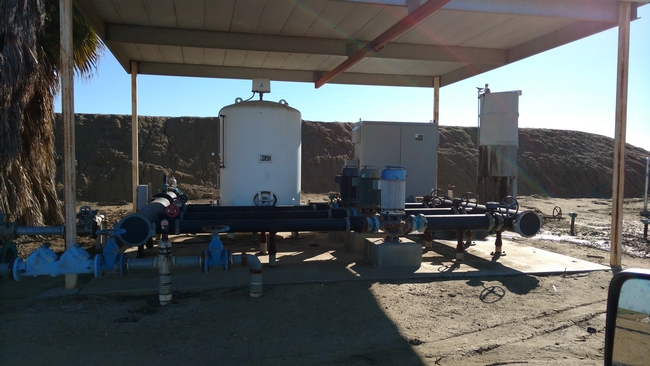
Later in the morning I had the chance to meet the entire crew at West Side; it was really nice of everyone to stop in and say ‘hi' despite having many other things to get done that day. Clearly this is a loyal bunch after hearing the number of years each has been with the REC, not to mention the distance some travel to get there and home each day – I won't complain about my commute, that's for certain.
Thanks for a great visit everyone! I hope to return soon.



